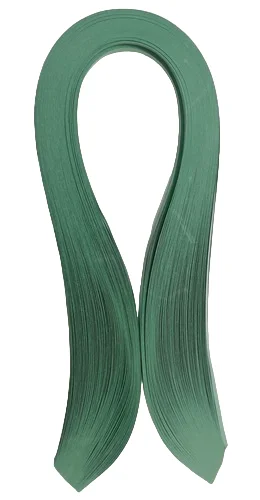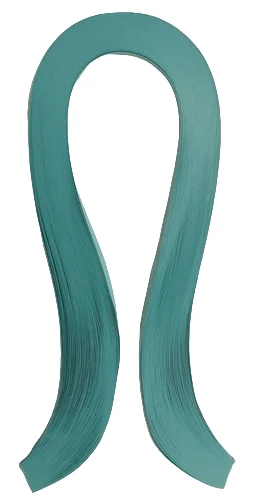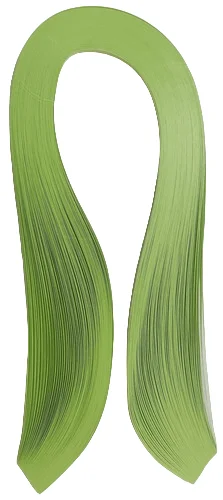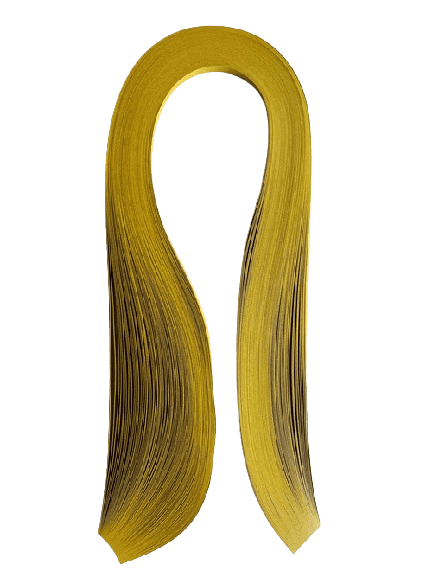Quilling Art is one of the most trending craft categories among crafters nowadays. Quilling paper is the first thing that you need to start any quilling project.
So, what is that Quilling Paper Strips? Let’s learn more about it here in this article.
Table of Contents
Quilling Paper Strips
Quilling Paper Strips are thin paper strips that are cut into different sizes based on the requirement of the quilling project.
The width starts from 2 mm and goes all the way up to 25 mm. The most common sizes are 2 mm, 3 mm, 5 mm, 7 mm, 10 mm, and 25 mm.
Most quilling papers available in India are 40-45 cm in length and the weight varies from 80-120 GSM. To your knowledge, normal printing papers weigh in between 80-100 GSM, and normal photo paper weight varies from 120-160 GSM
Normally 100 quilling paper strips are available in a bundle. Those bundles are packed and sold as one unit.
Quilling paper comes in different colors. You can get 100 strips of the same color in a packet or it could also be assorted colors. Single-color packets are a little costly over assorted colors.
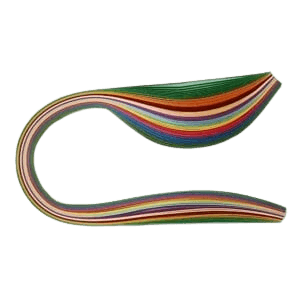
Types Of Quilling Paper
Quilling Papers are categorized based on the finishes that are applied to the strips.
- Non-Metallic Quilling Paper
- Metallic Quilling Paper
Non-Metallic Quilling Paper
Non Metallic quilling papers do not get a coating on them. Those paper strips are cut into sizes right after it comes out of the paper mill without any other secondary operation.
Non Metallic quilling papers look very dull and thin too. Those are not good for any commercial craft projects and applications where gloss is a requirement.
The good thing about Non-Metallic Quilling Papers is that they are very cheap and you will get them in varieties of colors.
Metallic Quilling Paper
Metallic Quilling Paper gets a special varnish coating on them that makes them very glossy and strong. You can also buy non-metallic quilling paper and apply varnish but you will never get the same gloss of metallic quilling papers.
There are different types of Varnish available in the market. For example, Glossy Varnish, Matt Varnish, Satin Varnish, etc. Depending on the project requirement, you can choose the one that suits you best.
The problem with metallic quilling papers is that they are very expensive and do not come in many colors due to less market demand.
How To Choose The Best Quilling Paper?
Choosing the best quilling paper may not be easy for new crafters. There are tons of vendors in the market that sells quilling paper. Getting the best out of this mess is a tough task. However, here are some guidelines that you may choose to follow.
1. Select The Right GSM For Strips
Many sellers who sell cheap quilling papers deliver very low GSM paper strips. Those are not even good for printing, forget about any quilling.
Choose quilling papers that are at least 100 GSM in weight. You can calculate the GSM of the paper here.
2. Select The Right Length For Strips
The normal length of quilling paper strips is 40-45 cm. If you are getting quilling paper strips for very cheap, you need to see if the length is correct or not. Many sellers sell 30 cm length quilling strips also. You should not fall into such a trap.
3. Decide If You Need Metallic Or Non-Metallic Quilling Paper
Depending on your project requirement, you can decide if you need metallic or non-metallic quilling papers. If you need more gloss, you need to buy metallic quilling paper, however, metallic quilling papers are relatively costlier than non-metallic ones.
Quilling Paper Price
Normally, good-quality quilling paper price starts from ₹5 and goes all the way up to ₹100 depending on the color, coating, and width of the strips.
Conclusion: Quilling Paper
Quilling paper is the first thing you need in your quilling project. Choosing the right quilling paper is a must if you want to make your quilling project successful. Here at RiansCart, we sell 50 different shades of quilling paper available in both metallic and non-metallic forms to cater to your overgrowing needs.
FAQ | Quilling Paper Strips
What Is Paper Quilling?
Quilling art is a form of art that involves rolling, looping, curling, twisting, or in other words manipulating thin paper strips into different shapes. You need to glue the paper strips once you manipulate those into your desired shape
